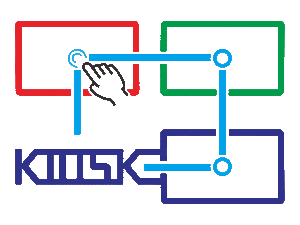


What is sheet metal processing?
Metal processing is a key part of the manufacturing process. From paper clips to flat parts, it is used to create a wide variety of products. Metal fabrication is an essential step in creating everything from hardware and tools to automotive parts and pipes.
In 2013 alone, shipments of manufactured metal products reached $345.1 billion! Although metal products are common, few people understand how metal manufacturing processes work. Most people think of welding when they hear metal making. But welding is just a process used by metal processors. So what exactly is metal manufacturing?
Sheet metal processing is a manufacturing process used to form metal into parts or end products. We use a variety of techniques to form sheet metal into parts or merchandise.
Most metals are made from sheet metal and can be up to 0.25 inches (0.8-6mm) thick .systemManufacturerConvert this sheet metal into a product or tool. We cut, stamp, fold or shape metal to make finished parts. Some examples of products made using metal include: hand tool bolts, nuts and screws cans cutlery pipes and pipe fittings metal door and window equipment accessories automotive parts metal manufacturing plays an important role in the manufacture of components for large scale consumption.Large-scale production of products such as screws, cans, cutlery, pipes and pans falls into this category.
These products often have consistent requirements and a wider margin of error. This means that the part may be slightly different from the original design, but still works as expected.
Metal fabrication, on the other hand, can also produce a large number of customized metal products. These projects typically include the design and manufacture of custom metal parts to meet the needs of the business. Custom valves, automotive parts and hardware are examples of such projects. Different types of metals make different types of metal manufacturing that are the end use of the product being manufactured, or the type of process used in the manufacturing process.
Most sheet metal processing is divided into three main categories:
Commercial Industrial Structure Commercial manufacturing refers to the work done when creating commercial products. This category covers products designed for consumers. Electrical appliances and automobiles are all common consumer products that are manufactured commercially.
On the other hand, industrial manufacturing creates parts for other equipment. In turn, the device manufactures consumer goods. Manufacturers use most industrially manufactured products. For example, band saws and iron machines are industrially manufactured products. Structural manufacturing refers to metalworking done as part of the construction process. Often, large-scale manufacturing projects create metal parts for shops, manufacturers, buildings, and skyscrapers. Each of these categories uses a variety of processes. Metal fabrication can use only one of these processes and can depend on the combination of processes. Many metal manufacturing projects require multiple steps. Even relatively simple products, such as pots or pans, require a variety of techniques.
Metal fabrication processes are more than simply forming metals. Metal manufacturing process Although most gold sheet metal processing sheet metal processing focuses on metal forming and cutting,
But successful manufacturing projects involve multiple steps. The process begins with design or rendering and ends with the completed feature. Design metal manufacturing projects: The first step in any project is design. Some companies come to us with a complete design. More commonly, companies come to us with prototypes. We work with them to improve and test the design before starting large-scale operations. Today, many metal manufacturers use computer-aided design (CAD) or computer-aided manufacturing (CAM) in their manufacturing processes. Through CAD and CAM programs, we were able to develop 3D prototypes of objects before starting actual metal machining.
Since the project can contain many components, this phase helps ensure that the product runs as required. From prototype or tear, we will determine the size and shape of each part we need. During the design process, we will also clarify the type of metal to be used and the finishing process required. Manufacturing parts: The actual construction process is the second step in metal manufacturing. At this stage, we will cut and shape each component from the design stage. Tools for making metal can include scissors, milling cutters, lathes, and impactors.
We often use CNC tools or computer numerical controls to ensure that each product is cut to the exact specifications. These tools extract computer programs that create exact commands and specifications for the work. Then load the program into the CNC machine